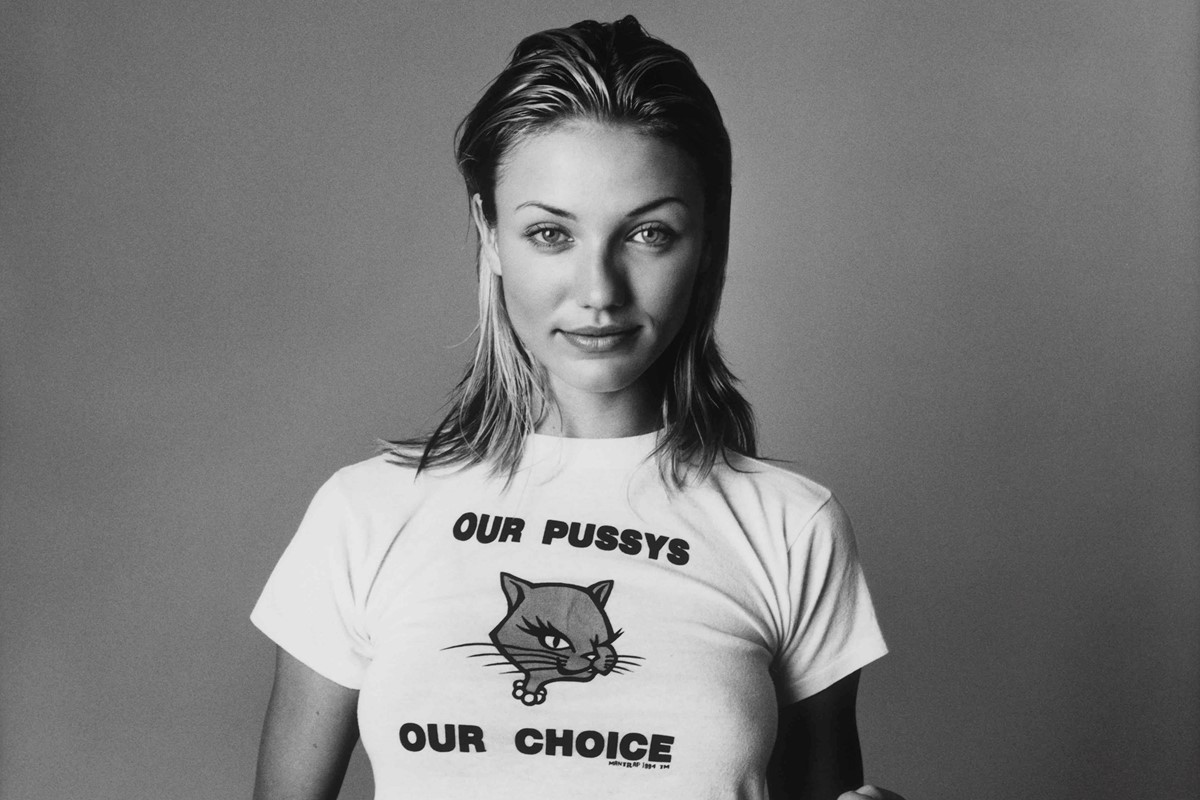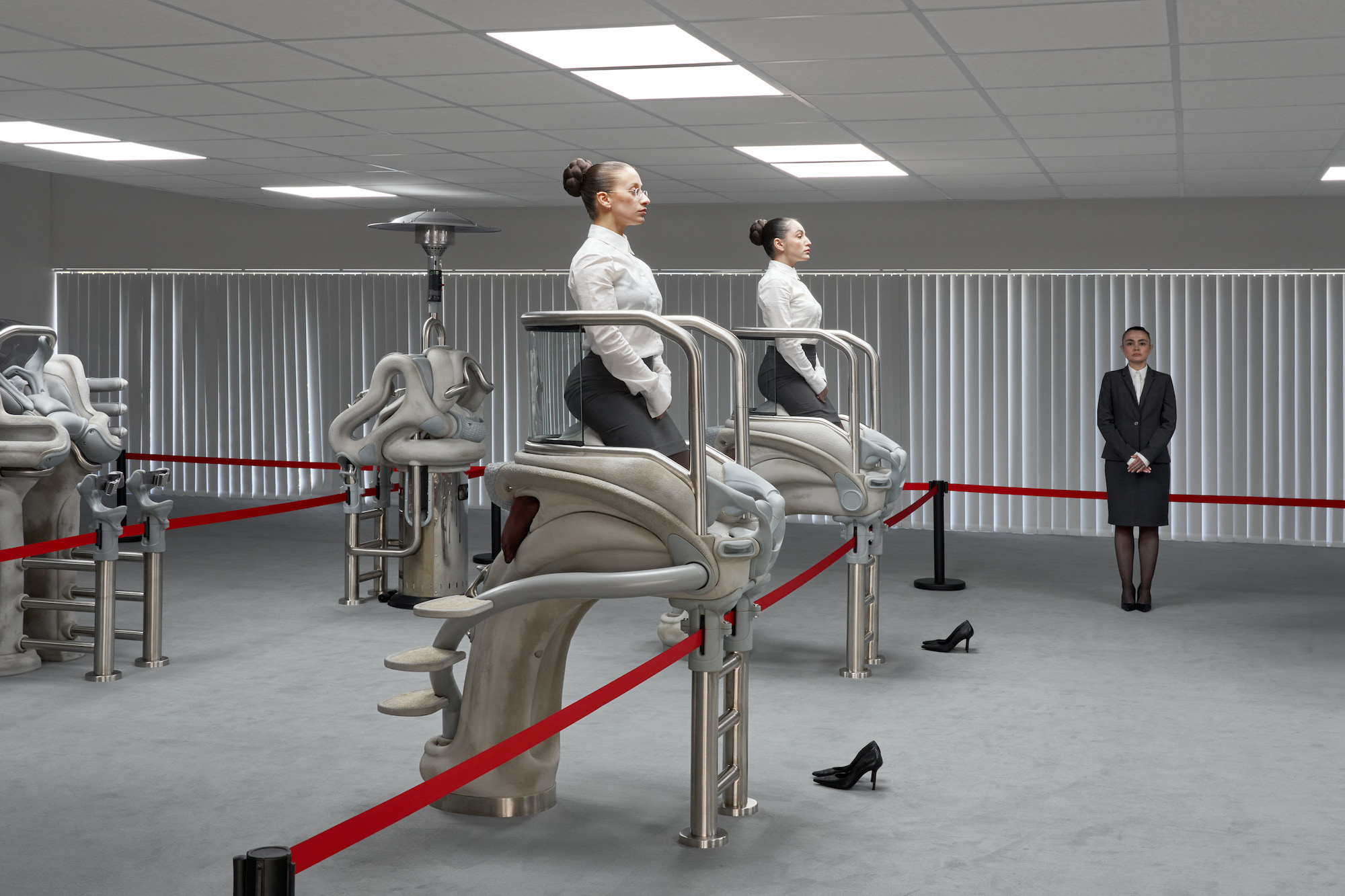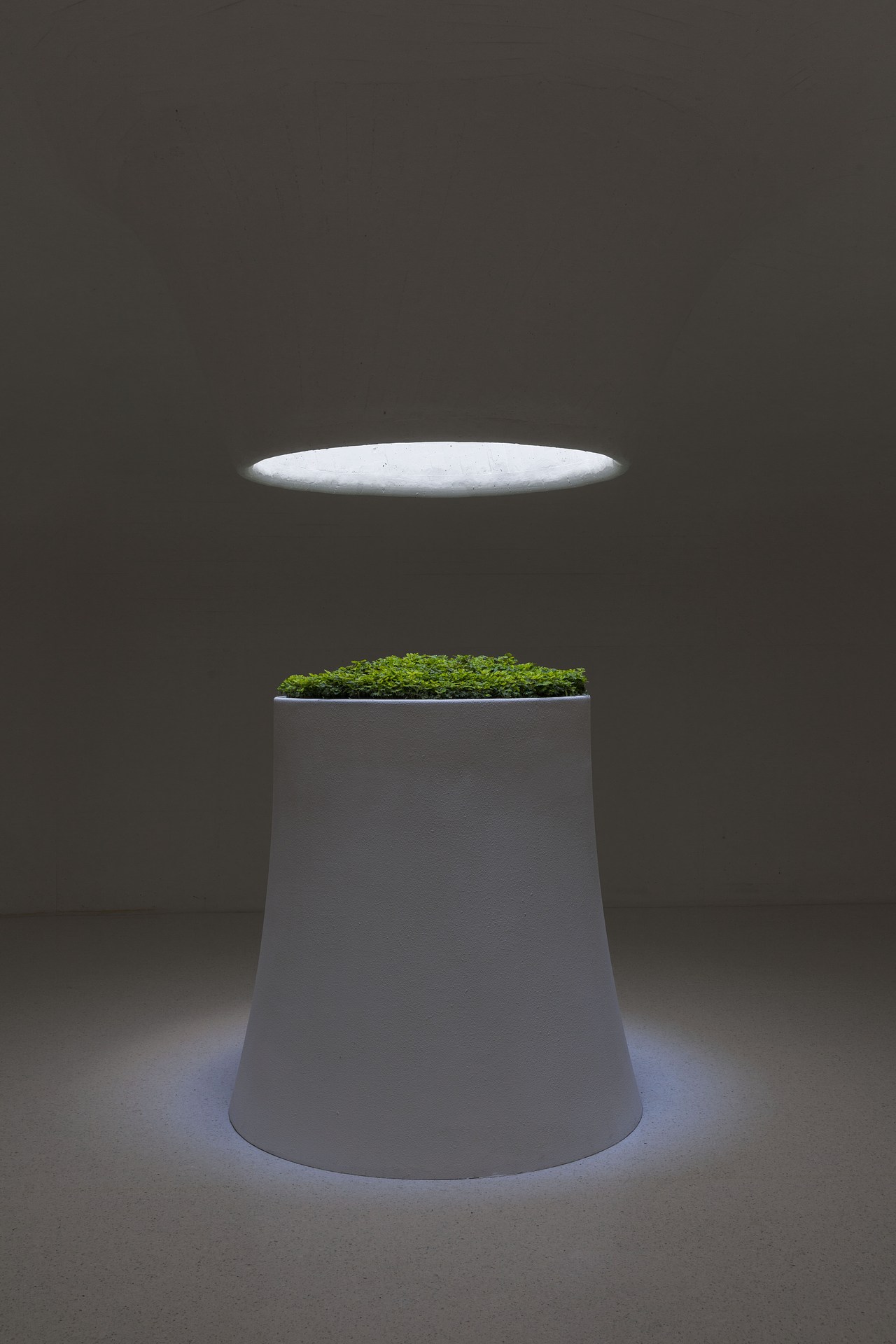Ponytail + Chongming Island II
- Film & Video (Film & Video)
11:41 minutes
Li Xiaofei
Combined into a single two-channel HD video, Li Xiaofei’s Ponytail and Chongming Island II are silent portraits of the women assembly line workers at a Chinese kitchenware factory. Close-up shots of women’s heads—most notably of the rear with their hair in the similar updo fashion—and faces occupy the frame amidst a backdrop of a revolving steel conveyor. In lieu of dialogue or humming of the machinery, a ringing score of chimes and bells provides a tranquil soundtrack. This video continues Li Xiaofei’s Assembly Line Project series (ALPS) which he began in 2010. Since then the project has evolved into three phases: the first is a series of interviews with workers of different levels within the assembly line, the second turns attention to the transformation of agricultural-turned-industrial landscapes with muted imagery and ambient sounds, and the third focusing on the dedicated manufacturing of common culinary necessities including oil, salt, soy, and vinegar. Recently, Li subtly reverts back to the individual consumed within the labor supply chain—although the redundant imagery renders one factory like any other, Li points to the very monotonous characteristics, such as the dress code and lockers full of belongings, that unifies (if not romanticizes) the plight and hardship of each individual. This review back to the workers perhaps draws attention to the looming consequences of China-US trade wars of 2018 which threatens not only the balance of global economic powers but also on a micro-level to individual livelihoods in which pay rates and employment are at stake.
Li Xiaofei initiated Assembly Line in 2010, an ongoing project that records industrialized social change not only China, but as it occurs internationally. “Jindu” Gold City, “Yindu” Silver City, “Tongdu” Copper City, and “Niedu” Nickel City are just few of the many cities in China named after the minerals and metals that are mined and produced there. Li Xiaofei travelled across the country to shoot over 100 factories across China, while initiating dialogue and exchange with people of different positions within the assembly line. Through this documentation process, Li Xiaofei explores what lies beyond the orderliness of the assembly line, the capitalist factory, consumer society, social progress and social morals—the reality of people living in a highly systematic and institutionalized environment. He employed a “real time” shooting technique which was difficult to control, combined with the language of documentary and a fragmented interwoven approach to create a mutual restructuring and a transformation of the relationship between man and machine, in essence to reconstruct an illusory reality.
Colors:
Related works sharing similar palette

© » KADIST
Laura Hyunjhee Kim for Neon Was Never Brighter: A Glimpse Into the Future For the first outdoor contemporary art festival in Chinatown, San Francisco, Neon Was Never Brighter: A Glimpse Into the Future , in collaboration with Chinatown Media & Arts Collaborative (CMAC) and curator Candace Huey, KADIST San Francisco co-presents a new performance, Cosmocrane (2022) by Laura Hyunjhee Kim...

© » KADIST
Tanatchai Bandasak
2019Central Region by Tanatchai Bandasak is a meditation on materiality and time-based media centres on the mysterious, prehistoric ‘standing stones’ of Hintang in Northern Laos: little-studied megaliths which have survived thousands of years of political change and the cataclysmic carpet-bombing of Laos by the United States during the Cold War...

© » ANOTHER
The Story Behind Iconic 90s Images of Cameron Diaz, Heath Ledger and More | AnOther As his new exhibition opens in Milan, Michel Haddi tells us the story behind some of his most famous images of Gwyneth Paltrow, Kate Moss, Janet Jackson and more December 11, 2023 Text Gary Grimes Michel Haddi , the legendary French-Algerian fashion photographer, is a big believer in the importance of first impressions...

© » KADIST
Frieda Toranzo Jaeger
2017This triptych is based on a Tesla whose interior the artist customized on the Tesla website...

© » KADIST
Cheryl Donegan
2013Fashion is the focus of Blood Sugar , which consists of a video projected onto a vintage vinyl jacket set at torso height on a dressmaker’s dummy...

© » KADIST
Wong Kit Yi
2017Artist Wong Kit Yi’s A River in the Freezer combines directed and found footage to meditate upon glacial memory, cryogenics, and frozen fiction...

© » FAD MAGAZINE
Anna Uddenberg first ever film to premiere in the United States to audiences online this December - FAD Magazine Skip to content By Mark Westall • 29 November 2023 Share — Black Cube Nomadic Art Museum has announced the debut of Useless Sacrifice , a short film created by renowned international Berlin-based Swedish artist Anna Uddenberg...

© » KADIST
Frequencies of Tradition at Incheon Art Platform, Curated by Hyunjin Kim With works by Sooryeon Choe, Chung Seoyoung, Yoeri Guépin, Ho Tzu Nyen, Chia Wei Hsu, siren eun young jung, Jane Jin Kaisen, Alexander Keefe + Ashoke Chatterjee & Liz Phillips, Tomoko Kikuchi, Ayoung Kim, Gala Porras-Kim, Seulgi Lee, Young Min Moon, Hwayeon Nam, Part-time Suite, Ko Sakai & Ryusuke Hamaguchi, Lieko Shiga, Simon Soon + Roger Nelson & Stella, Stephanie Spray & Pacho Velez, Erika Tan, Fiona Tan, Evelyn Taocheong Wang, Wang Tuo, Ming Wong, Yo Daham, and Zheng Guogu Frequencies of Tradition departs from an understanding of tradition as a space of contestation, where one can critically reflect on Asian modernization and pluralize our comprehension of the regional modern...

© » SLASH PARIS
Sinae Lee — Exposition personnelle — L'ahah Moret — Exposition — Slash Paris Connexion Newsletter Twitter Facebook Sinae Lee — Exposition personnelle — L'ahah Moret — Exposition — Slash Paris Français English Accueil Événements Artistes Lieux Magazine Vidéos Retour Sinae Lee — Exposition personnelle Exposition Vidéo À venir Sinae Lee, J’ai besoin de la chance, vue de l’installation vidéo à la biennale de la jeune création, Houilles © Marc Domage Sinae Lee Exposition personnelle Dans 8 mois : 2 → 23 mars 2024 L’ahah #Moret est heureuse d’inviter l’artiste Sinae Lee pour une exposition personnelle du 02 mars au 23 mars 2024...

© » SLASH PARIS
Gildas Le Reste — & Guests — Galerie Catherine Putman — Exposition — Slash Paris Connexion Newsletter Twitter Facebook Gildas Le Reste — & Guests — Galerie Catherine Putman — Exposition — Slash Paris Français English Accueil Événements Artistes Lieux Magazine Vidéos Retour Précédent Suivant Gildas Le Reste — & Guests Exposition Dessin, estampe, peinture Gildas Le Reste, Notes de voyage #1, 2023 Encre sur papier marouflé sur toile Gildas Le Reste & Guests Encore 27 jours : 27 janvier → 9 mars 2024 La galerie Catherine Putman est heureuse de proposer une double invitation à Gildas Le Reste, comme artiste et commissaire d’exposition...

© » KADIST
Zarouhie Abdalian, Rocky Cajigan, Jesse Chun, Nikita Gale, Shilpa Gupta, Baseera Khan, Tarik Kiswanson, Alexis Smith, and Cecilia Vicuña Be here, or even better, be nowhere brings together artists who employ sculpture, drawing, video, and sound to probe social and historical structures and infrastructures, such as migration, colonialism, carceral systems, and space militarization...








